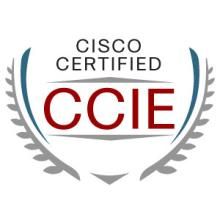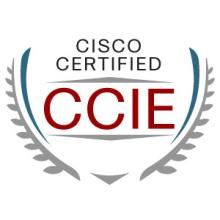Still worried about finding a job for CCIE? Still anxious about not knowing how to prepare for an interview? Welfare is coming! SPOTO summarize a list of the most important 300+ the CCIE interview questions that may be asked during the job search process, and hope to help you stand out in the job interview.

We divide these interview questions into the following six topics:
1.IP Routing
2.OSPF
3.EIGRP
4.QOS
5.BGP
6.MPLS
In this issue, we will first send you the interview questions covered in the first to third sections.
CCIE (Cisco Certified Internetwork Expert) Cisco certified Internet expert, is an expert certification exam launched by Cisco in the United States in 1993. Recognized as the most authoritative certification in the IT industry, it is the top certification in the global Internetworking field. Obtaining CCIE certification not only proves that your technology has reached the level of experts, but also has been recognized and affirmed by the industry. It is also a symbol of honor and a manifestation of self-worth. Obtaining CCIE certification is the dream of every network technician.
IP Routing
► What does it mean to have fast or autonomous switching “enabled” and “disabled” on the same interface?
► How is the load shared between two parallel lines of equal capacity when these lines are configured for load balancing?
► What does route summarization mean?
► When does a Cisco router generate a source quench?
► When does a Cisco router initiate a routing request out its interfaces?
►What is the difference between the ip default−gateway, ip default−network, and ip route 0.0.0.0/0 commands?
► How do I use the ip helper−address command to forward Bootstrap Protocol (BOOTP) frames?
► Would it be possible to configure a router for a 255.255.254.0 Ethernet and a 255.255.252.0 serial subnet?
► Does IGRP/RIPv1 support variable subnetting?
► Can an interface have more than one ip access−group statement in its configuration?
► Can I configure two interfaces in the same subnet (t0 =142.10.46.250/24 and t1 142.10.46.251/24)?
► Is it possible to have duplicate ip addresses for two serial interfaces that belong to the same router?
► Is there a performance advantage when using the IP access list keyword established on an extended ACL?
► What is Unicast Reverse Path Forwarding (uRPF)? Can a default route 0.0.0.0/0 be used to perform a uRPF check?
► Who does load−balancing when there are multiple links to a destination, Cisco Express Forwarding (CEF), or the routing protocol?
► What are the maximum number of secondary IP addresses that can be configured on a router interface?
► Can a VLAN interface and a tunnel interface have the same IP address?
► What is Virtual Routing and Forwarding (VRF)?
► How do I connect two different ISPs and route different traffic to different ISPs?
► What is the difference between the two methods to create static routes?
► What is the purpose of ports 2228 and 56506?
► How do you limit the number of sessions when a customer accesses the network?
► What does the term threshold and timeout in IP SLA operation mean?
► What is Network Descriptor Block (NDB)?
►What is the difference between point−to−point sub interfaces and multi−point sub interfaces?
OSPF
► How do I change the reference bandwidth in OSPF?
► How does OSPF calculate its metric or cost?
► What algorithm is used by OSPF if equal cost routes exist?
► Are OSPF routing protocol exchanges authenticated?
► What is the link-state retransmit interval, and what is the command to set it?
► What is the purpose of the variable IP-OSPF-Transmit-Delay?
► Are the multicast IP addresses mapped to MAC-level multicast addresses?
► Does the Cisco OSPF implementation support IP TOS-based routing?
► Does the offset-list subcommand work for OSPF?
► Can I use the distribute-list in/out command with OSPF to filter routes?
► Why do I receive the “cannot allocate router id” error message when I configure Router OSPF One?
► Why do I receive the “unknown routing protocol” error message when I configure Router OSPF One?
► Do I need any special commands to run OSPF over BRI/PRI links?
► Do I need any special commands to run OSPF over asynchronous links?
► Why are OSPF show commands responding so slowly?
► What does the clear ip OSPF redistribution command do?
► Does OSPF form adjacencies with neighbors that are not on the same subnet?
► How often does OSPF send out link-state advertisements (LSAs)?
► How do I stop individual interfaces from developing adjacencies in an OSPF network?
► Why is it that my Cisco 1600 router does not recognize the OSPF protocol?
► Why is it that my Cisco 800 router does not run OSPF?
► Should I use the same process number while configuring OSPF on multiple routers within the same network?
► How does OSPF use two Multilink paths to transfer packets?
► How can you detect the topological changes rapidly?
► Does the 3825 Series Router support the OSPF Stub feature?
► Can we have OSPF run over a GRE tunnel?
► How does ISPF impact or improve the OSPF network?
► Is there a way to compare Cisco NX-OS/IOS OSPF commands?
EIGRP
► Does EIGRP require an ip default-network command to propagate a default route?
► Should I always use the EIGRP log-neighbor-changes command when I configure EIGRP?
► Does EIGRP support secondary addresses?
► What debugging capabilities does EIGRP have?
► What does the word SERNO mean on the end of an EIGRP topology entry when you issue the show IP EIGRP topology command?
► What percent of bandwidth and processor resources does EIGRP use?
► Does EIGRP support aggregation and variable length subnet masks?
► Can I configure more than one EIGRP autonomous system on the same router?
► What does the neighbor statement in the EIGRP configuration section do?
► When I configure EIGRP, how can I configure a network statement with a mask?
► I have two routes: 172.16.1.0/24 and 172.16.1.0/28. How can I deny 172.16.1.0/28 while I allow 172.16.1.0/24 in EIGRP?
► How do you verify if the EIGRP Non-Stop Forwarding (NSF) feature is enabled?
► How can I use only one path when a router has two equal cost paths?
► What is the difference in metric calculation between EIGRP and IGRP?
► What is the EIGRP Stub Routing feature?
► How can I send a default route to the Stub router from the hub?
► What are different route types in EIGRP?
► How do you redistribute an IPv6 default route in EIGRP?
► How does EIGRP behave over a GRE tunnel compared to a directly connected network?
► How can I tag external routes in EIGRP?
► What are the primary functions of the PDM?
► What are the various load-balancing options available in EIGRP?
► Is there an IPv6 deployment guide that includes EIGRPv6?
► Is it normal that EIGRP takes over 30 seconds to converge?
In the next issue, we will bring you the CCIE interview question on the topic of "QOS" "BGP" and "MPLS", so stay tuned!

 Join Telegram Study Group ▷
Join Telegram Study Group ▷














